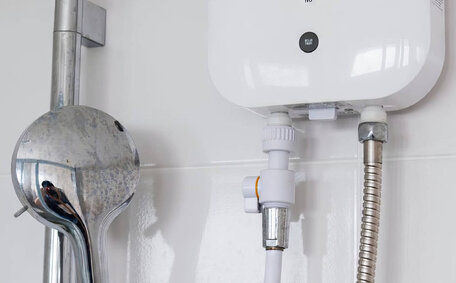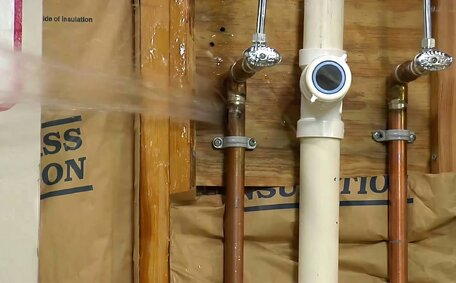Sources and Environmental Effects of Drainage System Sediment
There are various sources that contribute sediment into drainage systems, leading to environmental impacts. Major sources include:
- Erosion from land clearing and construction sites where vegetation and topsoil are removed
- Urban stormwater runoff carrying debris, litter, and sediments from roads and developed areas, often a result of soil erosion
- Riverbank erosion exacerbated by vegetation removal near waterways
- Agricultural runoff containing nutrient-rich sediment and soil
This sediment can have detrimental effects by:
- Smothering aquatic habitats and organisms like fish eggs
- Transporting other pollutants like nutrients, heavy metals, and toxins into waterways
- Clogging drainage infrastructure over time
- Reducing dissolved oxygen levels due to turbidity
- Increasing flood risk by filling channels and drainage pipes
Preventative measures involve retaining natural vegetation near waterways, stormwater treatment devices, erosion control structures, and public education campaigns. Homeowners can also implement simple solutions like drain covers to stop debris entering their systems.
Erosion and Construction Sites
Construction sites are a major source of sediment from erosion. Studies show over 1.8 million tonnes of sediment enter waterways annually from construction areas in Australia.
When natural vegetation is cleared for buildings and infrastructure, exposed soil is vulnerable to erosion, especially during storms. Runoff can then transport this sediment into drains and watercourses, getting washed away from the construction sites.
Typical construction activities leading to erosion include:
- Removing topsoil and trees
- Reshaping landforms
- Construction vehicle movements over bare ground
Without proper erosion and sediment control measures in place, construction sites can discharge up to 500 times more sediment than undisturbed lands. Sediment-laden runoff poses risks like:
- Waterway & habitat degradation
- Drain blockages
- Flooding due to reduced drainage capacity
Developers must implement erosion control plans addressing elements like sediment fences, stabilised site exits, and prompt revegetation of exposed areas. This protects the surrounding ecosystem while preventing extra sediment from entering drainage infrastructure.
Stormwater Runoff Pollution
Stormwater runoff occurs when rains flow over urban landscapes, transporting debris, sediment, and other pollutants into drainage systems and waterways.
Impervious surfaces like concrete prevent rainfall from soaking into soil, creating conditions where waterways can become overwhelmed by rapid runoff. This results in large volumes of stormwater rapidly washing sediments, nutrients, metals, oils and litter from developed areas into storm drains.
Studies show over 90% of urban stormwater contaminants come from diffuse sources swept up in runoff flows. As our cities expand, the higher proportion of impervious surfaces causes more runoff and pollution challenges.
Excess sediment is specifically problematic as it accumulates in pipes, channels and water bodies, reducing their carrying capacity over time. Potential effects include:
- Blocked drains from silt and debris buildup
- Habitat damage as sediment smothers riverbed ecosystems
- Flood hazards by impeding drainage flows
Mitigating stormwater pollution involves improving permeability, installing gross pollutant traps and implementing water sensitive urban design (WSUD) elements like rain gardens and bioswales into infrastructure projects.
These measures slow, filter and infiltrate more rain where it falls, rather than allowing it to rapidly wash downstream uncontrolled. Homeowners can also help by avoiding litter and maintaining vegetation around their property.
Aquatic Impacts from Sedimentation
Excess sediment washing into waterways can cause substantial damage to aquatic ecosystems and water quality.
When suspended sediment settles, it can physically smother riverbeds, wetlands and coastal habitats. Sediment fills spaces between rocks and aquatic plants that provide critical habitat for invertebrates, fish eggs and larvae.
High turbidity from sediment blocks sunlightpenetration, reducing the ability of submerged plants to photosynthesize. Over time, these combined impacts degrade the health and productivity of waterways.
Sediment movement also carries other pollutants like heavy metals, nutrients and toxic compounds into aquatic environments. Slow water flow allows these pollutants to accumulate in sediments.
Increased nutrient loads often cause algal blooms that deplete oxygen levels further, threatening native aquatic life. Maintaining clear drain pipe systems reduces hazard risks while protecting connected downstream ecosystems.
Preventing Soil and Sediment Buildup in Drains
There are several effective ways for homeowners and businesses to prevent sediment buildup in drains, protecting infrastructure and avoiding blockages.
Use External Drain Covers
Installing covers or grates over gully drains and downpipes prevents larger items like leaves and litter entering the system. This first line of defence catches debris before it reaches pipes.
Maintain Surrounding Vegetation
Well vegetated areas ensure water can minimise the amount of exposed soil that erodes into drains during storms. Retain plants and mulch gardens around the property, plant buffer strips along waterways and stabilise cleared sections promptly.
Clean Gutters and Drains Regularly
Manually removing accumulated sediment and organic matter from drainage systems reduces chance for further buildup. Clear drains before winter storms and after high runoff events.
Use Porous Paving and Plantings
Porous materials allow more stormwater infiltration into surrounding soil, rather than running off elsewhere. Installing permeable pavers, rain gardens and swales minimises pollution-carrying runoff.
Erosion Control Structures
Install sediment fences, check dams or contour banks to capture eroding soil on site, preventing it entering waterways. Divert stormwater flows away from exposed areas.
Following sediment reduction principles protects drainage infrastructure, waterways and aquatic life from excessive build up over time.
Sediment Control Devices
There are various drainage protection devices available to capture sediment before it enters and blocks pipes. Key options include:
Drain Covers
Covers with small perforations block leaves and litter without obstructing water flow. They are fitted over drain grates and pipe inlets to provide a first line of defence.
Silt Fences
Temporary fence fabric dug into the ground traps fine sediment from runoff flows on constructions sites and recently cleared land. They filter out soil before it reaches drains.
Sediment Traps
Small pits or ponds collect runoff, allowing soil particles to settle out of suspension before water passes an outlet into drainage infrastructure.
Stormwater Filters
Modular filters containing pollution-absorbing media strip sediment, oils and debris from stormwater. They connect to existing drains and pits.
Gross Pollutant Traps
Metal screens across drainage channels catch floating litter, vegetation and debris. Sediment settles on the concrete base for easy removal.
Inspecting and maintaining these appropriate sediment control measures protects drainage capacity, infrastructure longevity and waterway health.
Drain Protection Measures for Homeowners
There are simple, practical steps homeowners can take to protect drains from sediment buildup during rain events and periods of high water flow:
Install Drain Covers
Fitting drain covers over gully traps and pipe inlets provides a barrier to catch leaves, grit and debris before it enters pipes. This first line of defence is easy to retrofit.
Clear Drains Before Wet Weather
Manually removing debris from drainage systems in anticipation of forecast rain allows greater capacity for higher flows. Prevent organic matter and sediment accumulating.
Check and Maintain Drain Integrity
Inspect drain pipes and junctions regularly for cracks or tree root infiltration. Sound structures withstand higher water flows that may erode unmaintained drains.
Stabilise Surrounding Soil
Bare soil or sand near drains erodes easily when waterlogged. Apply mulch or vegetation to stabilise the area and filter runoff. Divert flows around vulnerable zones.
Install Water Absorbing Landscapes
Rain gardens, porous paving and native plants retain more stormwater on-site through infiltration reducing runoff volumes. Slow release mimics natural drainage.
Simple ongoing maintenance and diversion tactics lessen risk of sediment buildup during high flows, keeping home drainage systems clear.
Using Silt Bags and French Drains
Silt bags and French drains are useful sediment control devices that homeowners can implement to help prevent drain blockages.
Silt Bags
Silt bags made from geotextile fabric are placed around downpipes and drain outlets to filter out soil, grit and leaves before they enter the system. Water passes through the permeable bag walls while sediment is trapped inside for easy removal.
They can be tied in place when undertaking excavation or landscaping to capture eroded soil on site. Silt bags provide a simple, affordable protective barrier suitable for DIY installation.
French Drains
French drains are trenches lined with gravel and permeable piping that intercept and divert stormwater flows away from key infrastructure. They provide an alternative path for runoff, preventing it from picking up sediment which could block adjacent drains.
French drains may run alongside paved areas like driveways to keep eroding soil and debris from washing onto impervious surfaces where it can be transported into gutters and pipes. The gravel filters and slows water movement, allowing sediment to settle out.
Both these options handle runoff responsibly before it reaches drainage systems, reducing risk of sediment buildup and blockages during rain events.
Mitigating Existing Blocked Drains
If a drain becomes blocked due to soil or sediment buildup, prompt mitigation is required to restore proper drainage and prevent wider pipe damage or leaks.
Identify the Blockage Source
Use a plumbing camera to inspect the drain line and determine the exact location and cause of the blockage. This guides targeted clearing efforts.
Manually Clear Debris
Remove leaves, grit and other debris from drain grates and gully traps to allow water flow before using mechanical drain clearing equipment.
High-Pressure Water Jetting
Specialised jetting nozzles propel pressurised streams of water to dislodge and flush out sediment clogging pipes. Vacuum extraction also captures debris.
Chemical Treatment
Caustic soda crystals dissolve organic matter like roots or grease within drains via a chemical reaction to restore flow. Must be handled by qualified technicians.
Replace Damaged Pipes
If drain walls are significantly weakened or breached by extensive sediment or tree roots, pipe sections may need replacement to prevent collapse and future blockages.
Contact professional plumbers like Bexley Plumbing if drain issues reoccur for a permanent solution. Our extensive local expertise rectifies blocked drains fast.
Identifying Vulnerable Pipes
Certain sections of household or commercial drainage systems tend to be more vulnerable to soil and sediment buildup over time.
Older Pipes
Ageing drainage pipes made from materials like clay or concrete can develop cracks, joints and tree root ingress that allow sediment and debris to accumulate. Poor structural integrity also makes them prone to further erosion damage during high flows.
Shallow Gradient Pipes
Drain lines laid at flatter slopes move water more slowly, allowing suspended particles to settle out of flows and collect inside pipes. Gradients less than 1:60 fall height to pipe length ratio are high risk.
Junctions and Bends
Soil particles accumulate at drain junctions where flows merge and change direction. Turbulence drops the sediment load.inspection points at junctions indicates erosion and buildup risks.
Perforated Pipe Sections
Perforated pipes used for soakage trenches or stormwater infiltration zones allow water to pass through holes into the gravel backfill surrounding them. Sediment readily enters these constantly submerged sections.
Identifying older and flatter drainage lines helps target maintenance to clear sediment before major blockages occur. Monitoring junction points also highlights early buildup issues.
Signs of Drainage Issues
There are several clear warning signs indicating your drainage system is being impacted by sediment buildup that requires prompt attention:
Slow Draining Water
Noticeable delays in water emptying from sinks, showers or toilets suggest partial blockages are slowing flows. Sediment accumulation narrows pipe capacity over time.
Gurgling Noises
Bubbling or gurgling sounds from drain grates during water discharge indicate airflow is blocked by debris or sediment. Solids are obstructing the pipe.
Foul Sewage Odours
Sewage gases escaping into your home due to water backing up behind a partial clog smells unpleasant. Sediment, roots and debris reduce waste water flow.
Pooling Water
Excess water gathering around drains or gully traps signals the system cannot cope with volumes. Sediment packed pipes have lost drainage capacity.
Noting these warning signs helps identify sediment problems early before major blockages occur.
Professional Drain Cleaning Services
If drain blockages persist despite attempts to manually clear debris or install protective devices, it is advisable to contact professional plumbing services.
Experienced technicians have specialised jetting and vacuuming equipment to thoroughly flush sediment and roots from pipes without damage.
They can also identify underlying issues allowing ingress such as pipe cracks, junction failures and root intrusion before they worsen.
For convenient appointments in the Bexley area, contact our team at Bexley Plumbing on 1300 349 338 or [email protected].
With 24/7 availability, we rectify blocked drains fast while preventing recurrence. Maintenance plans also optimise ongoing drainage system integrity.
Don’t tolerate persistent clogs - our responsive service and local expertise offer a swift, lasting solution.






